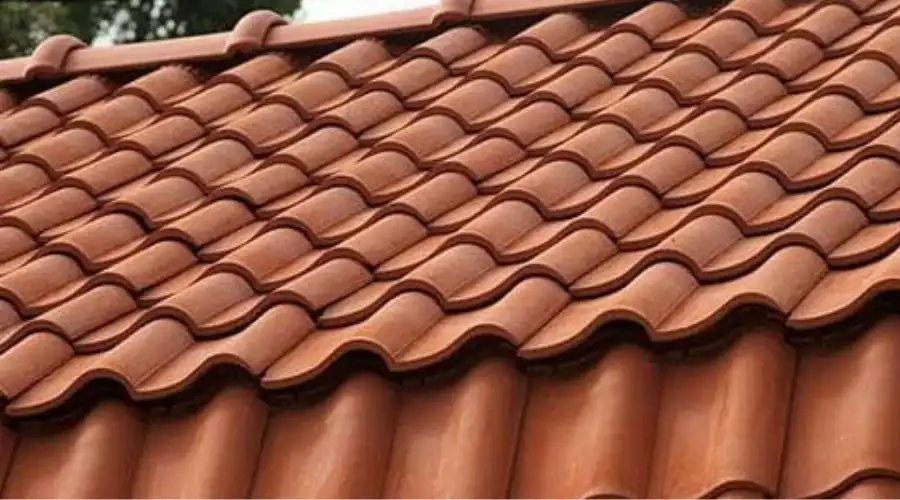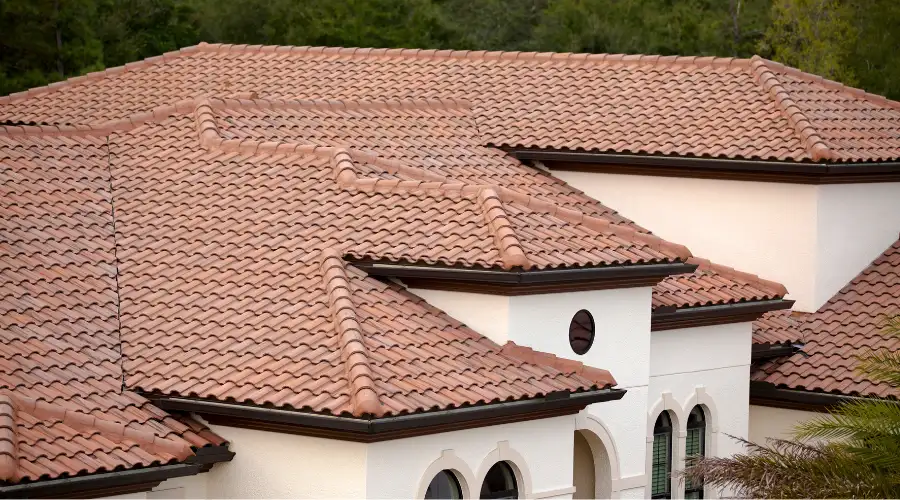People often judge a building based on its looks, and most of their prime focus is on the roof. It is crucial to enhance the aesthetics and deliver solid protection to the home. A well-maintained roof gives a more sophisticated look to the building.
Ceramic tiles are one of the prime options when it comes to roofing and have been used for centuries. This blog will explore this roofing option in detail.
What Are Ceramic Roof Tiles?
Ceramic roof tiles are roofing materials that are made from natural clay that are fired at high temperatures to create a durable and non-porous surface. These roofing tiles have been widely used for centuries and are known for their durability, aesthetic looks, and energy efficiency. They come in numerous types and offer a wide range of benefits to housing units.
Types of Ceramic Roof Tiles
Glazed Tiles
Glazed tiles are coated with a layer of glaze that gives a glossy and matte finish. These tiles are highly durable against all external conditions, making them less likely to fade over time. The glossy look adds more aesthetics and a unique shine to the roof. These tiles are highly used in Western-style architecture due to their vibrant appearance.
Unglazed Tiles
These tiles offer more natural and earthy looks that showcase a rough and unfinished surface of the raw clay. These tiles can develop moss or algae growth, thus requiring regular maintenance. They are widely used in dry climates and for historical or antique-style homes.
Interlocking Tiles
Interlocking tiles are designed with a system that allows them to lock together securely, providing a seamless and uniform look. These tiles are easier to install, as they fit together precisely without using nails or clips. The solid interlocking system prevents the structure from a potential leaks. These tiles are ideal for places with high winds or areas where quicker installation is key.
Flat Tiles
Flat tiles offer a smooth, uniform, and rectangular or square-shape design that lies flat on the roof with slight overlapping over the other. These tiles have fewer contours to channel water yet provide effective drainage when installed properly. They are widely used in places of dry and mild climatic conditions where design is more important than drainage systems.
S-Shaped Tiles

These tiles are in a distinctive “S” shape that allows better interlocking with one another, creating an undulating effect across the roof. They offer a seamless water drainage system through the contours of the tiles. These roof tiles are highly popular in Western and Southwestern style architecture due to the aesthetic and practical benefits they offer.
Barrel Tiles

These are rounded tiles, often in the shape of cylinders, resembling the looks of barrels or domes. These tiles are placed in a curved overlapping pattern that offers an excellent water drainage system and improved air circulation under the tiles, reducing the heat buildup in hot climates. These tiles are suitable for places with harsh weather conditions, providing enhanced protection.
Benefits of Ceramic Roof Tiles
- They provide excellent weather resistance properties, allowing them to survive in all types of harsh weather conditions.
- It absorbs moisture and reflects sunlight, which helps in regulating the room temperature underneath the roof surface. This keeps the structure cool in summer and warm in winter, reducing the cost spent on ventilation.
- The high durability of these tiles is less prone to cracking or breaking, which requires minimal maintenance.
- The diverse tile roofing options it offers in terms of colours, shape, and textures give a visually pleasing look.
- Made of natural clay, they generate less waste, making them a more eco-friendly roofing option.
- The high-temperature firing process involved in the manufacturing of ceramic tiles helps provide excellent resistance against fire, making them an excellent choice for fire-prone areas.
Disadvantages
- High initial cost compared to other roofing materials.
- These are heavy tiles that may not suit all types of construction.
- The installation process is complex, as it requires intricate and precise installation, which demands skilled labour.
- These tiles are brittle; there is a high chance of cracking under impact, which require a cautious approach while walking on the roof or during repairs.
Installation Process
Preparation
Prepare the roof surface by cleaning the debris, mould or other imperfections. Ensure that the roof surface is smooth, level, and free from undulations. Install reinforcements if needed for a smooth and hassle-free installation.
Tile Installation
The tiles are then carefully laid based on the roof’s design. Begin laying the tiles from the starting row at the bottom of the roof and move upwards. Ensure that the tiles are properly aligned and have a slight overlap as the eaves drain water from the roof. Secure the tiles using nails or tile clips, ensuring the interlocking to prevent water infiltration. Install ridges at the top of the roof with mortar or tile clips to secure them in place.
Final Inspection
After installing tiles, ensure that they are properly aligned with no gaps. Ensure that the flashing around vents or chimneys is properly installed and sealed. Clean the tile surface to remove any leftover dust or debris from the roof surface.
Maintenance and Care
- Have a regular inspection to check for cracks, breakages, and missing tiles.
- Clean the leaves, branches, or other deposits on the roofing surface regularly.
- Remove moss or algae growth on the surface with mild detergent or roof cleaner, using soft bricks or pressure washers.
- Repair or replace the cracked or broken tiles, and secure the loose tiles quickly to avoid major damage.
- Clean the gutters regularly, especially during rainy and moist weather conditions, to avoid water damage.
- Apply protective roof coatings to preserve the tiles from damage due to external conditions.
Conclusion
In summary, ceramic roof tiles are a durable, visually pleasing, and eco-friendly roofing option. They offer good protection to the occupants against all weather conditions and help keep the house safe and secure. The high durability of these tiles provides long-term benefits in terms of low maintenance, longer lifespan, and maximised energy efficiency. They offer a timeless and eco-friendly roofing solution, making them the most valuable and sustainable option for homes.

